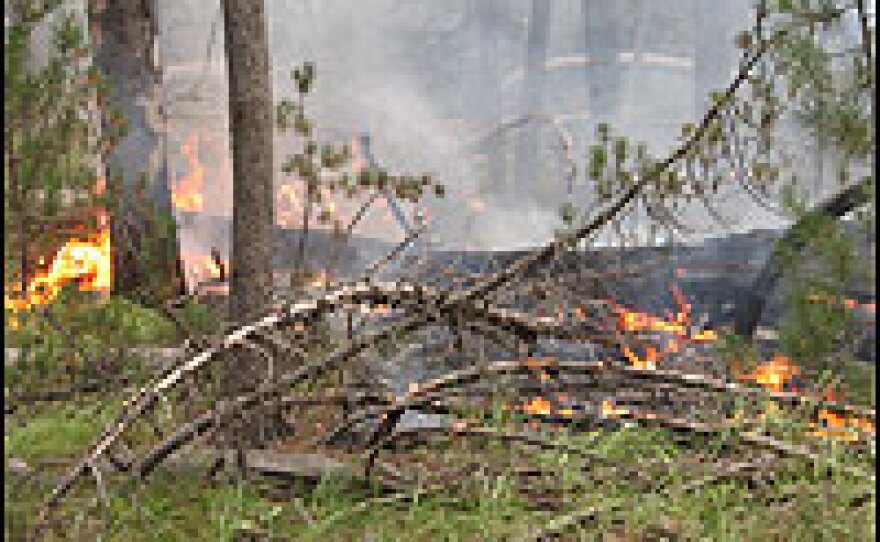
The Sheep Trail Fire in Idaho has burned about 7,000 acres so far. It's sustained by a carpet of dried-out twigs, waist-high brush and dead trees in the Boise National Forest.
The thick brush in this forest — and overgrown forests just like it all over the West — acts like a ladder for hungry fires climbing toward tree tops. And forest officials say this overgrowth, combined with a warming planet and more people moving into wild areas, means larger, more destructive forest fires in the near future.
Rain Fueling Fire
Ron Neilson, a bioclimatologist with the USDA Forest Service in Oregon, uses computer models to predict how climate change will affect plants over time. Though a warming planet should produce more rainfall over time, Neilson's models show that forests will grow beyond what the available water can support, and they'll start to turn brown.
Neilson is particularly concerned about the southeastern United States, where the terrain and the climate doesn't vary much. That allows fires to spread easily over wide areas.
"If one point is ready to go up, a whole huge area is ready to go up," says Neilson.
This scenario played out in the dried-out Okefenokee Swamp in Georgia and Florida this spring when the swamp caught fire and merged with another blaze that eventually scorched an area the size of Rhode Island.
Carbon Conundrum
Scientists are also concerned about fires in the "boreal forests" of Canada and Russia. The permafrost underneath those trees is melting, exposing deep layers of peat soil that has locked away carbon for thousands of years. When those forests catch fire, Neilson says huge amounts of carbon will be released, speeding up climate change.
In the U.S., the prospect of more frequent fires has intensified debates over how to manage forests. A group called Forest Service Employees for Environmental Ethics believes that the U.S. Forest Service, which now spends 40 percent of its budget on fighting fires, should stop its war on fire and teach people how to live with it instead. The group's executive director, Andy Stahl, says fire is both natural and necessary.
But the American Forest Resource Council, a lobbying group that represents members of the timber industry, believes that forests should be managed to control fires and also to store carbon. Chris West, the group's vice president, says the way to do this is to harvest carbon-releasing dead trees and plant carbon-hungry new ones.
"We need to go in there and remove those trees," West says. "Capture that carbon that's in those trees — either putting it into lumber and wood products or producing bio-mass out of it — and return the forest to a condition that they can sustain themselves on."
Copyright 2022 NPR. To see more, visit https://www.npr.org. 9(MDAzMjM2NDYzMDEyMzc1Njk5NjAxNzY3OQ001))







